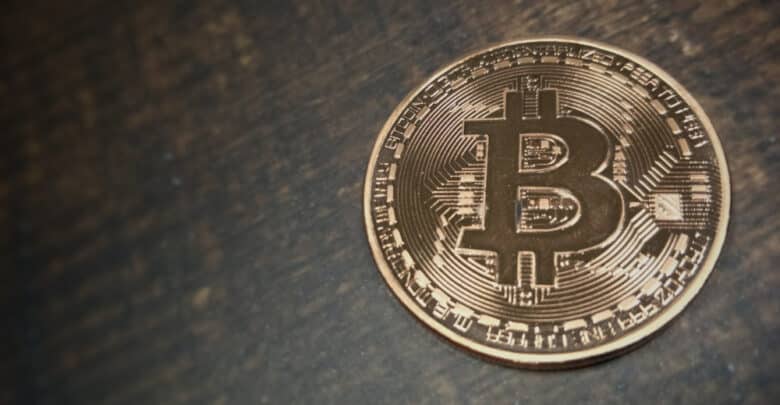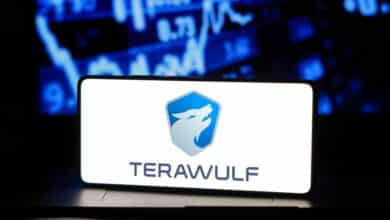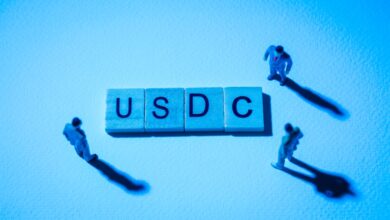A Complete Guide To Bitcoin Fees

Introduction
Bitcoin is one of the most popular cryptocurrencies in the world. It is also known as the flagship or beacon coin, meaning that it was the first coin native to a blockchain of the same name. Many people in the world today are using Bitcoins.
However, many investors ignore the factor related to Bitcoin fees. It is important to understand how Bitcoin fees work to work out the total cryptocurrency trading profit in advance.
What is Bitcoin Fee?
Bitcoin blockchain uses a PoW consensus model, meaning that it requires miners to verify the transactions on the network. These miners put their efforts into verifying transactions for all the users on the blockchain for a reward called mining or Bitcoin fees.
In some cases, users also refer to Bitcoin fees as tax. The people who are making transactions on the Bitcoin blockchains offer a commission for the miners as an incentive.
Miners are always looking for transactions that contain the highest commission or Bitcoin rewards. In this manner, the miners prioritize the blocks with the biggest Bitcoin fees on them.
Therefore, when the trading volume on the Bitcoin blockchain increases, the mining fees tend to go higher as well. On the other hand, if a user is unable to pay the suitable amount of transaction fee, their transactions are found to remain unverified for a long time.
How do Bitcoin Fees Work?
The bitcoin blockchain is a decentralized network that allows users to send Bitcoins from one user to another. However, since there are no centralized authorities present on this network, it means that users can face issues with the verification of their transactions. The task of verification of these decentralized transactions is done by miners.
Miners set up encryption machines that are used to decrypt the special code present on every single Bitcoin transaction.
When this code is solved, the transaction is authenticated and added to the Bitcoin blockchain ledger. However, miners are not paid by any government regulator or private financial firms to perform these tasks.
Therefore, Bitcoin users who are sending or receiving tokens on the network offer miners a set amount of Bitcoin fee. Miners pick the transactions first that offer higher mining fees. On the other hand, miners also get a set percentage of Bitcoin from the blockchain every time they validate a new transaction and add it to the Bitcoin blockchain.
Bitcoin users who wish to gain access to the Bitcoin ledger and find out the transaction fee trends need to understand it in detail. All the Bitcoin fees that are paid to the miners are added to the Bitcoin ledger.
However, the Bitcoin fee for every transaction is not mentioned, especially as highlighted. Therefore, anyone who is trying to figure out the transaction fee for any given Bitcoin transaction needs to minus the amount of the transaction to find out the transaction fee on the network.
There are also some aggregators and on-chain data collecting protocols that keep track of the Bitcoin transaction fees. However, it is important to note that the statistics from these aggregators can be biased and speculative. Therefore, it is ideal for investors to know the dynamic and be able to extract unbiased calculations using on-chain data from the Bitcoin blockchain.
How to Determine Bitcoin Fees?
The PoW or Proof-of-Work consensus model Blockchains like Bitcoin need miners that provide computing power to verify transactions. In most cases, people do not like to make any financial transactions online without having a centralized authority to verify them.
However, since Bitcoin is a permissioned and decentralized peer-to-peer network, it needs to have miners to perform the same task. Miners do not know the origin of the transactions, and they are only participating to earn the Bitcoin fees. Therefore, Bitcoin users need to learn how to determine Bitcoin fees.
At the outset, it can seem like Bitcoin transactions with the highest Bitcoin fees are going to be mine first. The statement is true, but it also requires further deliberation. It is important to note that all transactions on the Bitcoin network are different-sized.
Just like any bank wire, every person needs to transfer a different amount of money or Bitcoin. Therefore, all users can’t offer the highest amount of mining fee on all transactions.
Therefore, the rule of thumb for determining the Bitcoin mining fee is the size of the Bitcoin mining fee following the transaction size. Huge Bitcoin transactions have a bigger data size, just like a big computer file on any operating system. Therefore, miners look for the highest Bitcoin mining fee in the same size category. Bitcoin miners try to offer the highest possible mining fee based on the size of their transactions so that it makes more sense.
What is Bitcoin Fee Rate?
Now that the reader can determine the Bitcoin fee, they must also learn how to calculate it accurately. The Bitcoin user who is making a transaction today can become a miner later as well. Therefore, learning to calculate Bitcoin fees is crucial.
For master card payments, the transaction fees are charged under the size of the said transaction. For example, all transactions within $100 require a 10%, all transactions under $200 require a 20% transaction fee and vice versa. In the same manner, Bitcoin fees are charged with a unit called Satoshi per byte.
Satoshis are the smallest unit of one Bitcoin, like a cent is the smallest unit of a dollar. There are around 100 million Satoshis in one Bitcoin. Meanwhile, bytes are a unit of computation or a digital transaction. Satoshi per byte represents the number of Satoshis dedicated as mining fees for every byte or unit size of a transaction.
Under normal trading volume, small transactions can get a confirmation for 1 Sat/byte. However, as the network starts to get more crowded, the mining fee starts to climb higher organically. The measuring unit for the Bitcoin fee, i.e., Sat/byte, is also known as fee rate.
What is Bitcoin Transaction Size?
While discussing Bitcoin fee rate in the above paragraph, readers learned about bytes. Bytes are the standard unit for measuring any sort of online data transfer, such as internet download or upload speed etc.
However, it is important to learn what Bitcoin Transaction size is and what it represents. Here are some factors that can determine Bitcoin transaction size:
Input Frequency
Every Bitcoin that a user is going to receive is a digital record of all the previous transactions to credit your reserve in addition to the current amount of your Bitcoin reserves. The total number of Bitcoins in your possession and those that you are meant to receive are called inputs.
Therefore, when a user is trying to forward their Bitcoin reserves to a new recipient, they are only forwarding their past inputs. Therefore, the more inputs are present in a transaction, the bigger its transaction size will grow.
Output Count
Output count depends on the number of digital wallet addresses you are interacting with within a single transaction. If the user is forwarding inputs to a single digital wallet address, they are likely to create two outputs.
The first output facilitates the payment to the receiver and the second output is for paying back to the primary account for the change. It is important to note that if the inputs fulfill the complete payment and do not generate any change, there is going to be no output.
Script Processing
The Bitcoin transaction size also depends on the complexity of the script in every single case. There are some special transaction features like multi-sig that can increase the complexity of the transaction and thus require a higher transaction fee on account of the increasing transaction size.
How to Calculate Bitcoin Transaction Size?
It is not possible to calculate Bitcoin transaction size manually every time. Therefore, it is ideal that the task is done by computer programs. Therefore, all Bitcoin wallets calculate the Bitcoin transaction size for each transaction for the users automatically by factoring in all the above parameters.
At the same time, these digital wallets are also going to provide a maximum and minimum transaction fee by default. While these calculations are available automatically based on real-time data for average feerate for the investors, it is best to understand them for making the best trading decisions.
How to reduce Bitcoin Transaction Fees?
The objective of learning about Bitcoin transaction fees is to learn how to decrease them for the best results.
Here are some tips that would allow the investors to reduce their Bitcoin transaction fees effectively:
Trading Volume
Miners tend to prefer the transactions that offer the highest mining fee. Naturally, miners are going to prioritize the transactions that are more profitable for them, given the same amount of effort.
One important issue to notice here is that Bitcoin fees tend to go higher when there is more online traffic on the network. When the number of users increases in the network, the mining strength remains the same in most cases.
Therefore, investors started to offer higher transaction fees to get their inputs verified first. Hence anyone who wishes to refrain from paying massive transaction fees should use the network when the trading volume is low or average.
SegWit Support
SegWit stands for Segregated Witness, and it is a feature for Bitcoin wallets. SegWit wallet support is the type of digital wallet that can automatically reduce Bitcoin transaction size. All the latest Bitcoin digital wallets and custodial services providers offer this feature, and it can reduce the Bitcoin fee for the investors considerably.
Group Inputs
Investors can use the technique of grouping their inputs by sending Bitcoins to one address in small bits. The investors should make sure that they send these inputs to one address when the transaction fees are smaller.
In this manner, the inputs for the individual investor are going to increase by many folds, and the Bitcoin fee will reduce since the user will have a singular input.
Group Outputs
Just like the conjuncture of the inputs, it is also possible for the users to aggregate all their outputs. In most cases, users have to create a new account for their payback or output collection.
However, some digital wallets allow users to create a singular account for all of their output collections. In this manner, the users can send payments to multiple addresses without inflating their mining fees.
Bitcoin Wallets and Bitcoin Fees
There are several types of Bitcoin wallets, and different wallets use different mechanisms to reduce Bitcoin fees. In most cases, the investors are only aware of the automatically generated Bitcoin fees that are suggested by their digital wallets.
However, if a user has some knowledge and in-depth insight about the useful mechanisms that different digital wallets employ for reducing mining fees, they can pick the best digital wallet account for all their Bitcoin transactions.
The most important factor to consider for the users is to understand how the transaction size works. Therefore, they can go for digital wallets that offer SegWit support and allow them to group their outputs.
The second factor to notice for the users is to compare the mining fees that a digital wallet is creating with other applications. This process can take some time, but the users can also read the reviews and features of different digital wallets before creating their accounts.
Many digital wallets create massive amount of mining fee rates and do not have sophisticated algorithms that allow them to adjust inflation. Meanwhile, other digital wallets only take the latest transaction fee data into account before creating a suggestion for their users. Therefore, these fees are not only harmful on an individual level, but they can also raise the fee inflation for the whole market.
Investors should go for digital wallets that allow them to adjust fee suggestion mechanisms. Such digital wallets have set high, low, and medium mining fee suggestions that grant greater autonomy to investors.
Furthermore, the investors should also look for digital wallets that provide them with transaction size statistics. The transaction size reading is going to provide investors with the precise basis for calculating the ideal mining fee based on all related factors.
What to do When Your Transaction Fee Gets Stuck or Remains Unconfirmed?
Decentralized platforms like Bitcoin are very secure and very reliable in terms of security. However, they offer little assistance in regards to troubleshooting.
Fee stuck incidents tend to increase when the trading volume increases or decreases sharply and investors are unable to make suitable changes on account of lack of knowledge. Here are two main reasons why it can happen:
Check if the transaction fee ratios have increased on account of the increasing trading volume on the Bitcoin blockchain.
Recheck if the Bitcoins in your transfer transaction are still unverified. If the Bitcoins you have in your reserves are still unverified and not added to the block, it is impossible to use them for any transactions.
Here are some tips to remedy the issue of Bitcoin fees getting stuck or remaining unverified for a long duration:
Patience
Patience is a virtue also when it comes to solving the Bitcoin fee stuck problem. If the transaction in question is not time-sensitive or urgent, it is best to wait out and give it 72 hours gap before taking any other action.
RBF
RBF stands for Replace by Fee, and it is a special feature that allows Bitcoin wallet users to reboot a transaction with a higher fee tag. This feature is only suggested when the transaction in question is urgent. It is worth noting that a limited amount of Bitcoin wallets offer this option.
Transaction Accelerators
Transaction Accelerators are a wonderful solution provided by mining pools. These mining pools are trying to mine as many Bitcoin transactions as possible to increase their total mining earnings.
Therefore, they allow users to add their stuck transactions into accelerators using transaction IDs. The users can find the unique transaction ID from their digital wallet accounts. Most transaction accelerators are free of charge, while others are free up to a range of transaction sizes. Confirm TX, ViaBTC, and CoolWave are some of the top tx accelerators in 2022.
What is Double-Spending?
Double-spending is an alternative for those who do not have the RBF feature in their digital wallet accounts. They perform the same function, but it requires the investors to try to get their transaction mined by adding another transaction of the same size. It is the last resort, and experts do not recommend using this technique under normal circumstances.
What is Child Pay for Parents (CPFP)?
Child Pay for Parent or CPFP is a technique where the investors try to use unconfirmed transactions to perform a new transaction. The idea behind this technique is that the outgoing fees on the transaction are going to cover the mining fee for the next account as well. However, this technique is not advisable since most miners are likely to ignore such transactions.
Conclusion
Bitcoin fee is a complicated topic that requires some degree of investing in understanding. However, after reading a few useful articles on the subject, the investors will be able to understand the core factors related to this topic.
Bitcoin fee is going to remain stuck forever because the miners are going to notice it eventually. However, disproportionate Bitcoin Fees are always going to become the last priority for miners who are receiving decryption traffic from the whole world.
Tokenhell produces content exposure for over 5,000 crypto companies and you can be one of them too! Contact at info@tokenhell.com if you have any questions. Cryptocurrencies are highly volatile, conduct your own research before making any investment decisions. Some of the posts on this website are guest posts or paid posts that are not written by Tokenhell authors (namely Crypto Cable , Sponsored Articles and Press Release content) and the views expressed in these types of posts do not reflect the views of this website. Tokenhell is not responsible for the content, accuracy, quality, advertising, products or any other content or banners (ad space) posted on the site. Read full terms and conditions / disclaimer.







